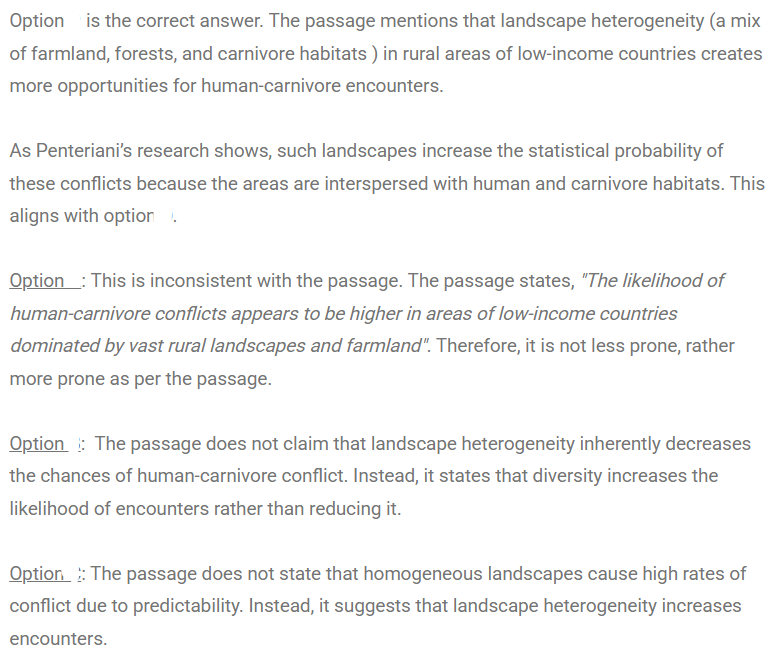CAT RC Questions | CAT RC- Social Science questions
FundaMakers is the Best CAT Online Coaching In India. Now prepare for CAT anytime with FundaMakers. We provide well-ordered syllabus coverage for both offline and online CAT preparation batches. FundaMakers brings to you the power-packed, well-structured CAT previous year question bank with more than 4000+ CAT Past Year questions. In the VARC section, one of the most frequently asked questions is from the topic- Reading Comprehension. Reading Comprehension turns out to be an important part of the VARC section from which over 60-70% of the questions are based on RC in the CAT Exam.
FundaMakers as a team has taken a painstaking step to bring you all the video solutions of the Reading Comprehension asked in the Previous Year CAT exam. CAT question bank offered by FundaMakers is a power-packed topic-wise compilation of the entire CAT previous year questions. Questions from the Reading Comprehension topic are some of the most scoring questions in the VARC section. To maximize your CAT score make use of FundaMakers CAT Question Bank. “Questions from CAT previous years” examination papers have been incorporated. Let’s get started with CAT Past Year Reading Comprehension Questions.
Comprehension
The passage below is accompanied by a set of questions. Choose the best answer to each question.
(. . .) There are three other common drivers for carnivore-human attacks, some of which are more preventable than others. Natural aggression-based conflicts – such as those involving females protecting their young or animals protecting a food source – can often be avoided as long as people stay away from those animals and their food.
Carnivores that recognise humans as a means to get food, are a different story. As they become more reliant on human food they might find at campsites or in rubbish bins, they become less avoidant of humans. Losing that instinctive fear response puts them into more situations where they could get into an altercation with a human, which often results in that bear being put down by humans. "A fed bear is a dead bear," says Servheen, referring to a common saying among biologists and conservationists.
Predatory or predation-related attacks are quite rare, only accounting for 17% of attacks in North America since 1955. They occur when a carnivore views a human as prey and hunts it like it would any other animal it uses for food. (. . .)
Then there are animal attacks provoked by people taking pictures with them or feeding them in natural settings such as national parks which often end with animals being euthanised out of precaution. "Eventually, that animal becomes habituated to people, and [then] bad things happen to the animal. And the folks who initially wanted to make that connection don't necessarily realise that," says Christine Wilkinson, a postdoctoral researcher at UC Berkeley, California, who's been studying coyote-human conflicts.
After conducting countless postmortems on all types of carnivore-human attacks spanning 75 years, Penteriani's team believes 50% could have been avoided if humans reacted differently. A 2017 study co-authored by Penteriani found that engaging in risky behaviour around large carnivores increases the likelihood of an attack.
Two of the most common risky behaviours are parents leaving their children to play outside unattended and walking an unleashed dog, according to the study. Wilkinson says 66% of coyote attacks involve a dog. "[People] end up in a situation where their dog is being chased, or their dog chases a coyote, or maybe they're walking their dog near a den that's marked, and the coyote wants to escort them away," says Wilkinson.
Experts believe climate change also plays a part in the escalation of human-carnivore conflicts, but the correlation still needs to be ironed out. "As finite resources become scarcer, carnivores and people are coming into more frequent contact, which means that more conflict could occur," says Jen Miller, international programme specialist for the US Fish & Wildlife Service. For example, she says, there was an uptick in lion attacks in western India during a drought when lions and people were relying on the same water sources.
(. . .) The likelihood of human-carnivore conflicts appears to be higher in areas of low-income countries dominated by vast rural landscapes and farmland, according to Penteriani's research. "There are a lot of working landscapes in the Global South that are really heterogeneous, that are interspersed with carnivore habitats, forests and savannahs, which creates a lot more opportunity for these encounters, just statistically," says Wilkinson.
CAT/2024.2
Question . 20
Given the insights provided by Penteriani's research and Wilkinson's statement, which of the following conclusions can be drawn about the relationship between landscape heterogeneity and human-carnivore conflicts?
Explanatory Answer
Method of solving this CAT RC Question from RC- Social Science question
CORRECT ANSWER IS C

Hey!
Worried about IIM calls due to your marks in 10th,12th, and Graduation?
Don't worry! Know your chances of getting an IIM Call based on your profile with our:-
Profile Professor: https://fundamakers.com/profile-professor/

5 Must- NOT-Dos during CAT Preparation.
- Do not treat CAT as 'Everything'.
- Do not quit your job for CAT exam preparation.
- Learning till The Eleventh hour instead of doing proper revision.
- Not checking the syllabus thoroughly.
- Piling up multiple books.
Click To Read:- Common mistakes made by CAT aspirants during preparation.
FundaMakers- Best Online and Offline CAT Online Preparation Institute in India
For any CAT Preparation related query, reach out to us at 9598333344.